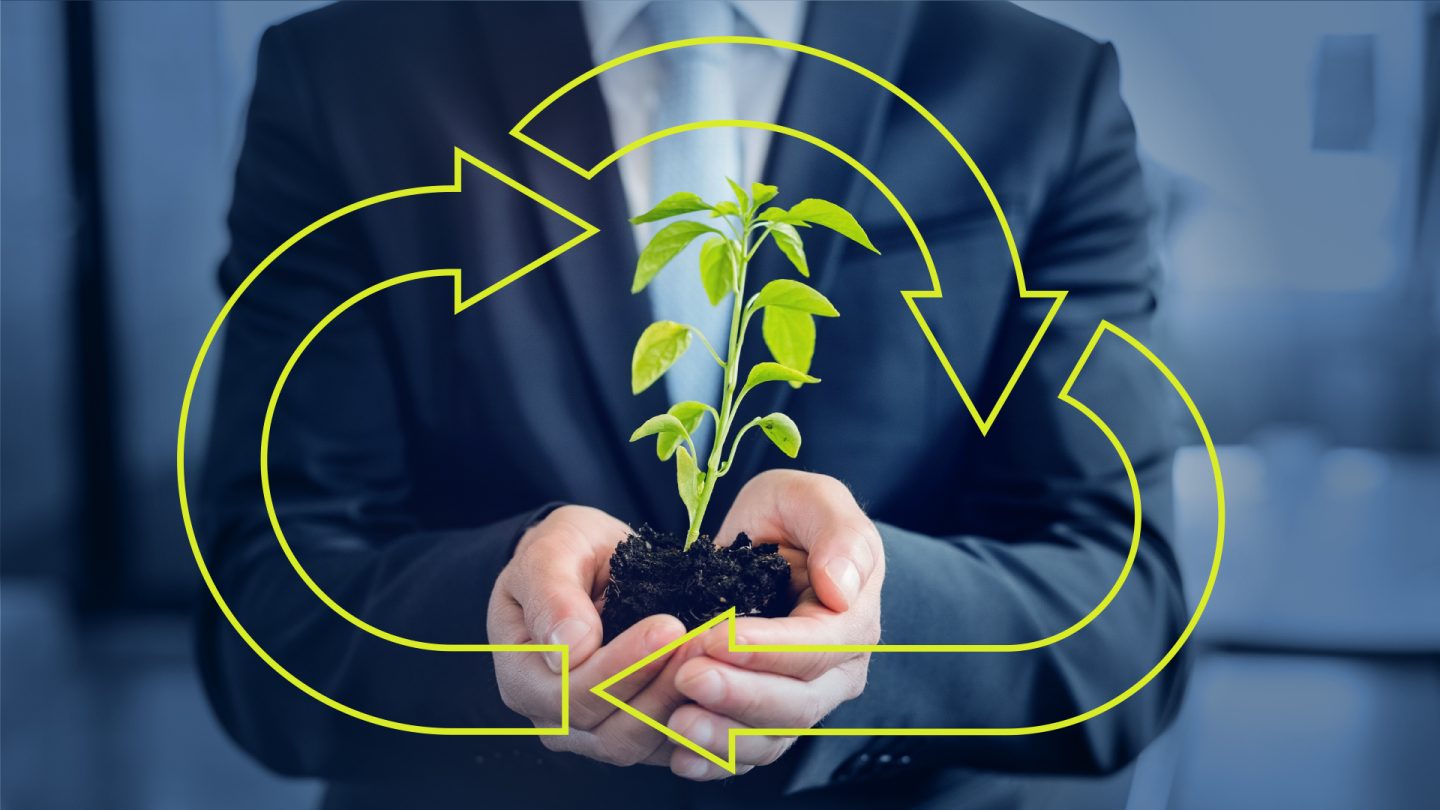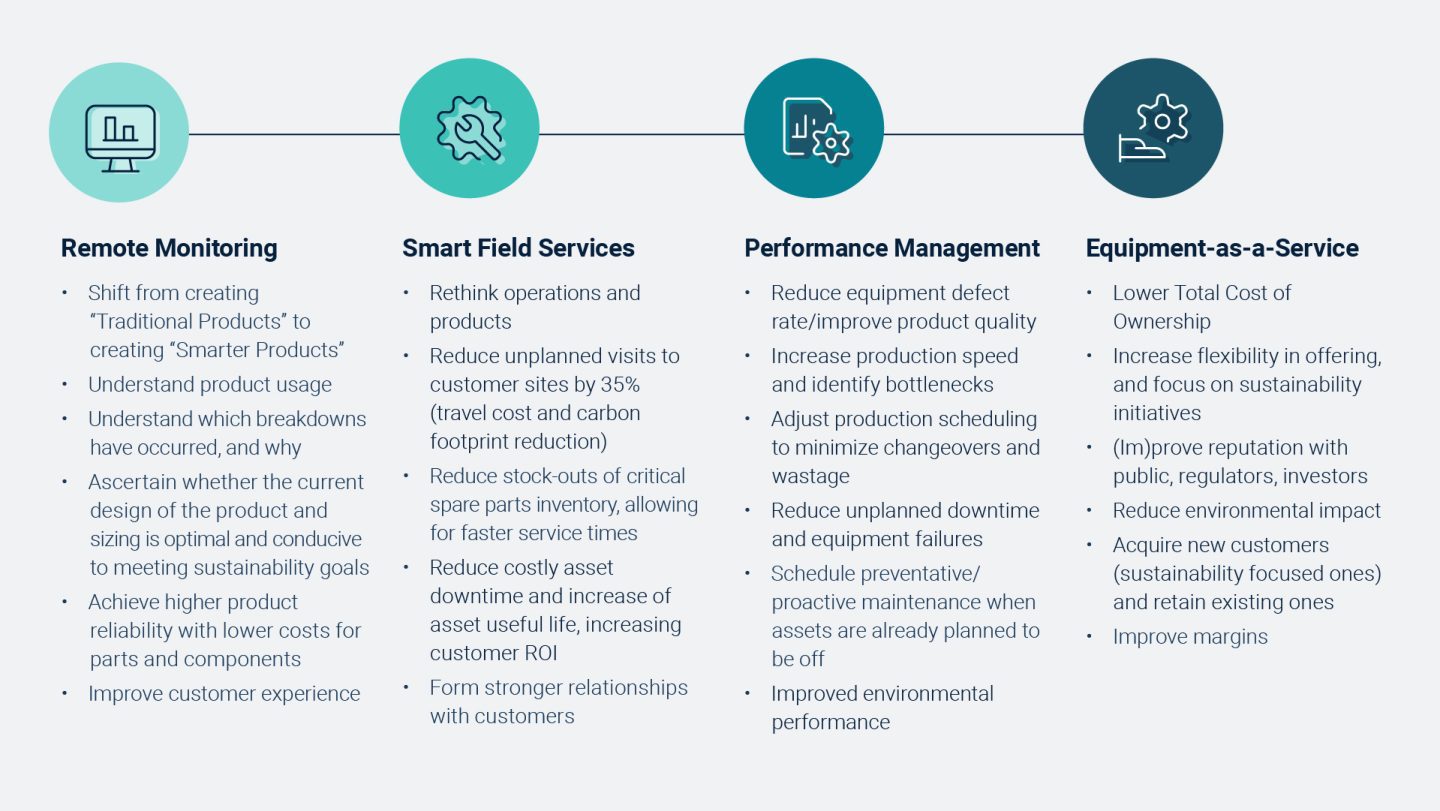Complementing your IoT Journey with Sustainability
Connecting enterprises to simplify operations, progress through your IoT journey, and reap the associated sustainability benefits.

“Worrying is like a rocking chair, it gives you something to do but doesn’t get you anywhere.”
Ryan Reynolds in Van Wilder
Worry. We all worry about the state of our planet and although this cheesy quote from an early 2000’s teen comedy featuring Ryan Reynolds is indeed corny, it rings true to all things in life, especially sustainability. If organizations don’t act now, they will not make an impact in helping reach the 17 UN SDGs that I briefly touched on in my last blog. Organizations are becoming more and more conscious of the impact they have on our environment, and truly connected enterprises have the edge.
Truly connected enterprises are the ones that deliver exceptional experiences to their employees, partners, and customers. These enterprises have gone through a complex digital transformation, now able to seamlessly integrate their systems with technology that connects effectively and processes that run effortlessly, enabling information and insights to flow more freely throughout their organization and to their stakeholders. For these reasons, only a truly connected enterprise has an understanding of its processes, operations, and the ways in which it can contribute to improve the state of our planet and help its customers achieve their sustainability goals.
Software AG’s customers operate in all industries, however, in IoT, a lot of our customers are in the manufacturing industry. We help them to simplify their connected world and reach their set out business objectives, while enabling them on their sustainability path.
When it comes to sustainability, the manufacturing space continues to be one of the major focuses in terms of adopting sustainability initiatives and taking action. CO2 emissions released by global fossil fuel combustion and industrial processes rose by roughly 35%, from 25.23 billion metric tons to 34.81 billion metric tons from 2000 to 2020. Manufacturers must continue their push on a sustainability front to achieve net zero carbon emissions by 2050. One avenue to explore is sustainable manufacturing, manufacturing through economically-sound processes that minimize negative environmental impacts while conserving energy and natural resources. Manufacturers can therefore no longer restrict sustainability to a reporting activity. Committing to clear actions is a must.
The IoT Maturity Curve and Sustainability
Manufacturers are connecting their enterprises to simplify their operations, while instilling a sense of transparency in processes, while optimizing these to improve productivity, while employing cost and energy saving strategies using IoT solutions.
IoT enables organizations to answer a plethora of sustainability related use cases, including transforming processes and operations to create a sustainably focused organization; adhering to changing regulations; integrating and reporting environmental data; and improving efficiency by connecting, monitoring, and maintaining connected devices remotely. As organizations embark on their IoT journey, and deploy different use cases, they go through different phases of IoT maturity, making their way through the IoT Maturity Curve.
The IoT Maturity Curve is Software AG’s view on the path towards leveraging IoT technology to create disruptive and optimized business models. The three phases that form the curve are outlined and depicted below. Starting with remote monitoring and informed field services, then graduating to remote data analytics, and, finally, Equipment-as-a-Service (EaaS) as a potential last step in an organization’s IoT journey along the curve. An EaaS business model requires a fundamental shift in an organization’s business model — away from the traditional sale of capital-intensive equipment.
Not one organization is the same, and every organization will therefore move along the IoT Maturity Curve at their own place, based on company and market conditions. It must be noted as well, as not all end goals are the same, achieving a disruptive business model might not be the best outcome for certain organizations, these are all dependent on the businesses set out objectives. With that being said though, sustainability plays a key role in each phase of the curve.


Phase 1: Using IoT applications to gain more insights into equipment operating performance via Remote Monitoring
Phase 2: Leveraging IoT technology to create enhanced service models using Smart Field Services and Performance Management
Phase 3: IoT technology enables EaaS business models to better align customer expenses to actual and necessary equipment operations
The sustainable IoT landscape involves challenges that are therefore amplified by the need to be constantly connected to devices, where disruptions are costly, growth is tightly linked to reliability, energy savings and lowering emissions, are just the tip of the iceberg.
An organization’s journey to making smart, connected products isn’t all or nothing — this is the same for their sustainability journey. Perceiving IoT as an Enabler allows organizations to pair their IoT journey with sustainability goals. Moving along the IoT Maturity Curve, creating value at each phase from both an operational and sustainability standpoint. Technical capabilities go hand in hand with evolving business and sustainability strategies to offer new value-added connected products and services. As IoT maturity increases, organizations will have everything they need to transition to an Equipment-as-a-Service model, a more sustainable approach to running one’s business — lowering ownership costs of equipment, improving waste, energy, and carbon management for more sustainable operations.
The IoT Maturity Curve associated use cases and their related sustainability initiatives are depicted below. The use cases correlate directly and indirectly to sustainability initiatives, playing a huge part in enabling sustainability.


The time for action was in the past, but now is also a good time to start, just like:
“The best time to plant a tree was 25 years ago. The second-best time to plant a tree is today.”
Eliud Kipchoge
Ryan Reynolds and Eliud Kipchoge make very important points, if organizations are not already acting on sustainability, there is no better time to start than now (other than years ago…). The mentioned sustainability initiatives highlight the importance to act now, as well as highlighting the great growth potential, the opportunity to optimize operations, improve efficiency in processes, reduce energy usage, save costs, and reduce waste and carbon footprint, as well as the opportunity to innovate and be a leader in your own market. All in all, preparing organizations to operate efficiently, sustainably, and conscientiously.
The upcoming blogs in our IoT for Sustainability series will take a deeper dive into the IoT use cases detailed in the IoT Maturity Curve, diving deeper into the links to sustainability and the associated benefits, expanding on the above linked initiatives. Furthermore, we’ll be recapping COP27 in relation to IoT. Be sure to subscribe to our blog to be the first to read the next instalment in this series.